Seagate Enterprise NAS HDD 6 TB Review
by Ganesh T S on December 10, 2014 8:00 AM EST- Posted in
- NAS
- Storage
- Seagate
- HDDs
- Enterprise
Single Client Access - NAS Benchmarks
Evaluation of single client performance in a networked environment was done by configuring three drives in RAID-5 in the QNAP TS-EC1279U-SAS-RP unit. Two of the network links were bonded (configured with 802.3ad LACP). Our usual Intel NASPT / robocopy benchmarks were processed from a virtual machine in our NAS testbed. The results are presented in the graphs below.

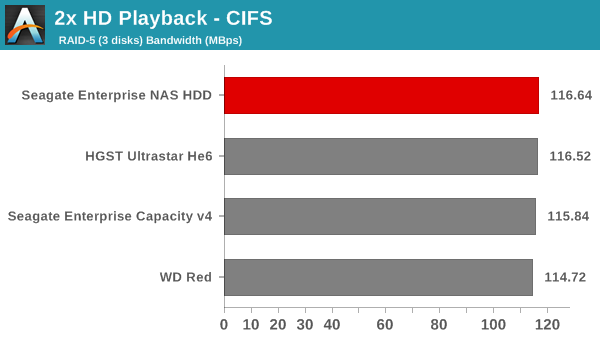
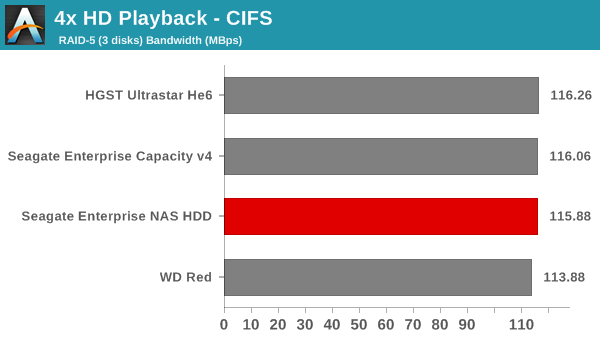
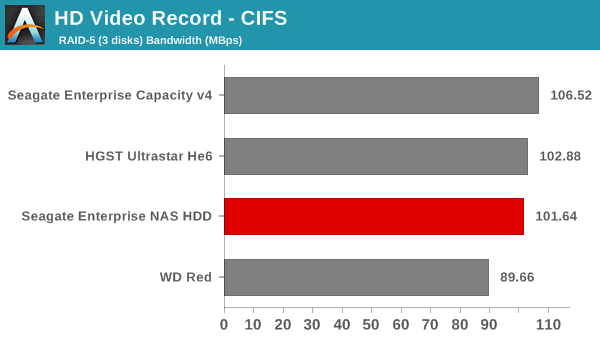
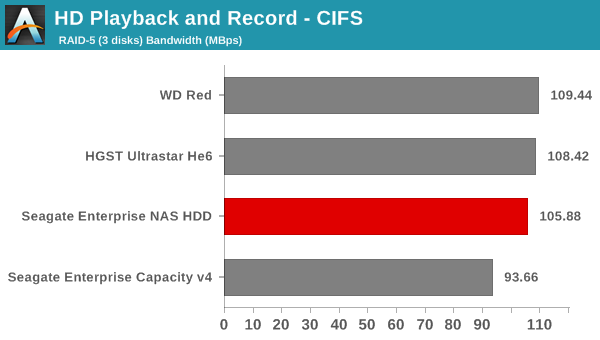
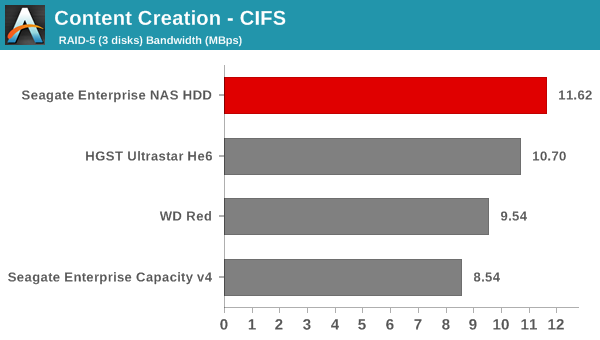
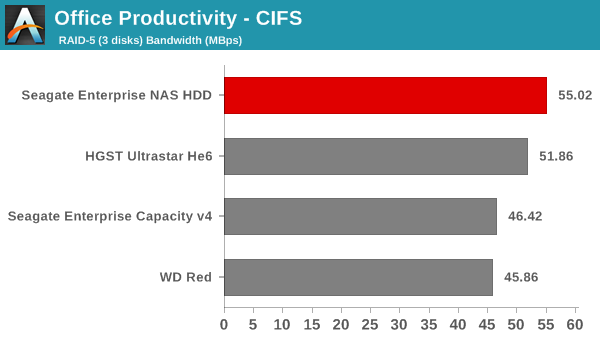
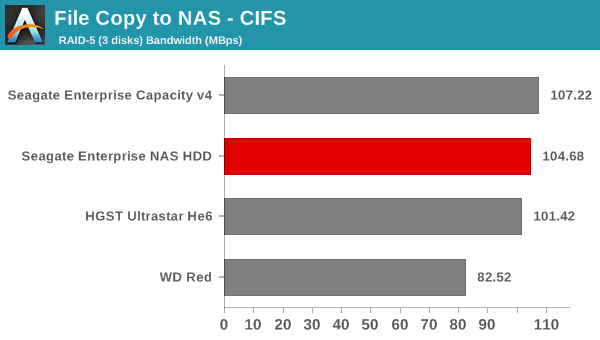
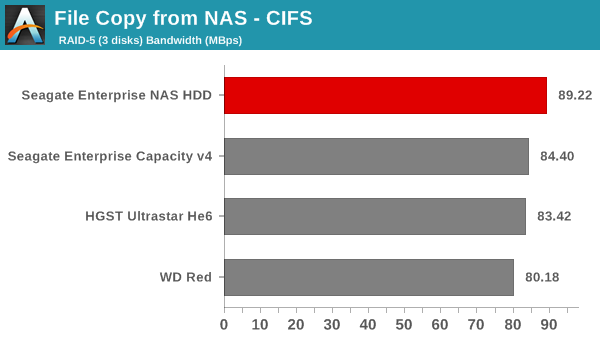
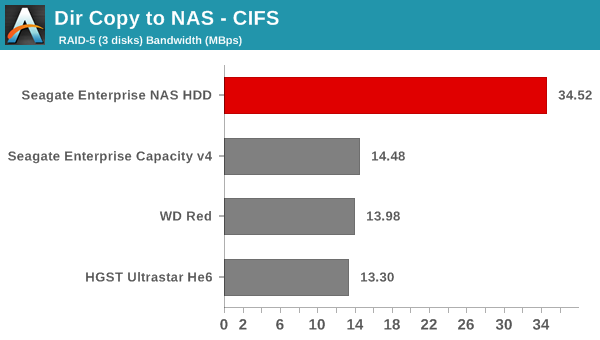
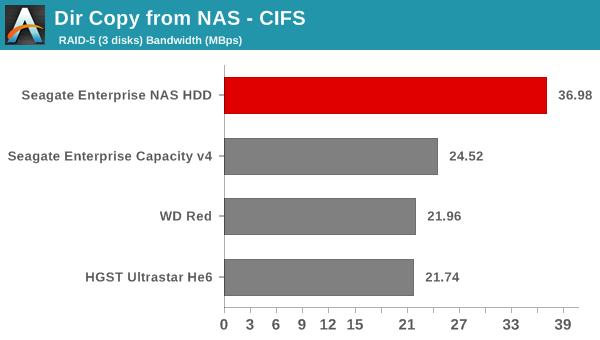
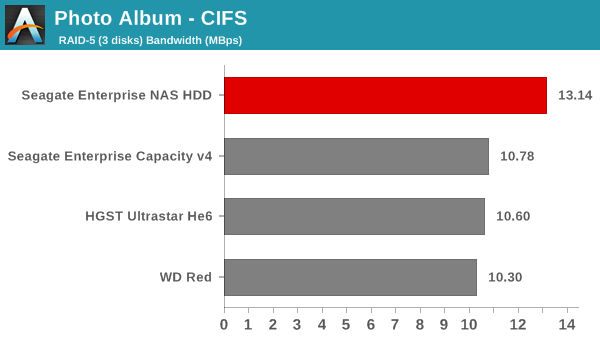
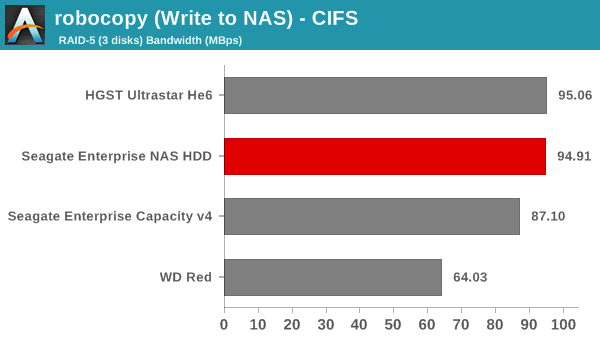
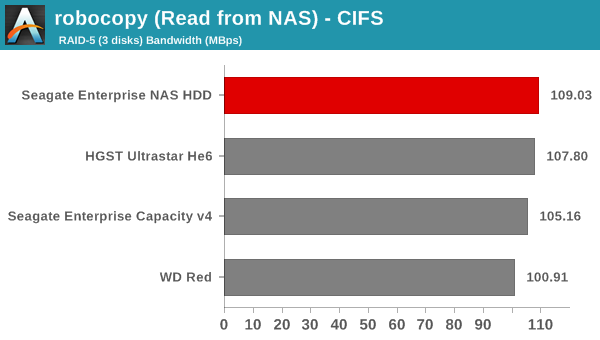
For almost all workloads, there is no discernible difference between the performance of various drives, indicating that it is the network acting as a bottleneck for single client access. Differences start to appear when there are multiple clients accessing the NAS.










51 Comments
View All Comments
hlmcompany - Wednesday, December 10, 2014 - link
I can see that happening. I just never thought of IntelliPower as being such a thing. HDD's cannot vary their spindle speed during data access. A fixed spindle speed during operation is monitored by the drive, and if it changes, it is considered a major error. You'd actually hear the WD drive Click twice, and then read Track 0 in an attempt to re-calibrate it's position.extide - Wednesday, December 10, 2014 - link
This would be really easy to verify with a oscilloscope, just watch the waveforms going into the stepper motor... (But yeah, intellipower drives run at fixed speeds, although different models can run at different speeds than other models)MrSpadge - Wednesday, December 10, 2014 - link
Thanks.. that sounds better than their 1st explanations. Although I'd still prefer if they said straight "it's 5.4k rpm, give or take a few".hlmcompany - Wednesday, December 10, 2014 - link
Marketing.... *sigh*hlmcompany - Wednesday, December 10, 2014 - link
Seagate lists this drive as 7200 rpm, which matches its direct competitor, the WD Red Pro.Oyster - Wednesday, December 10, 2014 - link
Ganesh, I'll admit I didn't read between the lines, but why exclude the WD Red Pros from the analysis? Seems a bit out of place to compare an enterprise class HD to a non-enterprise class HD (WD Reds @ 5400 RPM, with 3 year warranty, lower MTBF)?MrSpadge - Wednesday, December 10, 2014 - link
Because there is no 6 TB Red Pro. Using 800 GB platters it already needs 5 of them to reach 4 TB and can not even reach 5 TB yet.MrSpadge - Wednesday, December 10, 2014 - link
Ganesh, in your conclusion you simply attribute the performance advantage of the Seagates to their larger cache. While the cache does help, it normally doesn't help a lot once you have enough of it. Otherwise we would see much larger caches already, as DRAM in the sub-GB range is really cheap, whereas we're talking about 500$ enterprise HDDs here.I suspect the larger platter density of the Seagates has more to do with their performance than the cache. Firmware also plays a major in real world HDD peformance.
ganeshts - Wednesday, December 10, 2014 - link
We observed similar performance advantages for the Seagate Enterprise Capacity v4 vs. the WD Red Pro at the 4 TB capacity point.Both of them use the same number of platters, have the same rotational speed. The only difference was the cache size.
That said, things are indeed different in this case - the WD Red has lower rotational speed, but does have higher platter density (1.2TB/platter) at the 6TB point. So, I should probably have not stressed the cache size differences too much (just had a hangover from the 4TB review)
MrSpadge - Wednesday, December 10, 2014 - link
The 4 TB Seagate Enterprise Capacity v4 also uses 1 TB platters, whereas the Red Pro uses 800 GB platters. Compare the sequential write speeds in MB/s (max - average - min):Red Pro 4 TB: 179 - 142 - 86
Ent. Cap. v4 4 TB: 210 - 166 - 97
Ent. Cap. v4 6 TB: 224 - 171 - 104
The Seagates perform almost identical, with a minor advantage for the 6 TB model. However, the Red Pro is significantly slower.